Carnivorous plants captivate with their unique adaptations and incredible diversity. These fascinating species have evolved to thrive in nutrient-poor environments by trapping and digesting insects. Discover some of the most intriguing carnivorous plants from around the globe, each with its remarkable characteristics and origins.
Venus Flytrap (Dionaea muscipula)
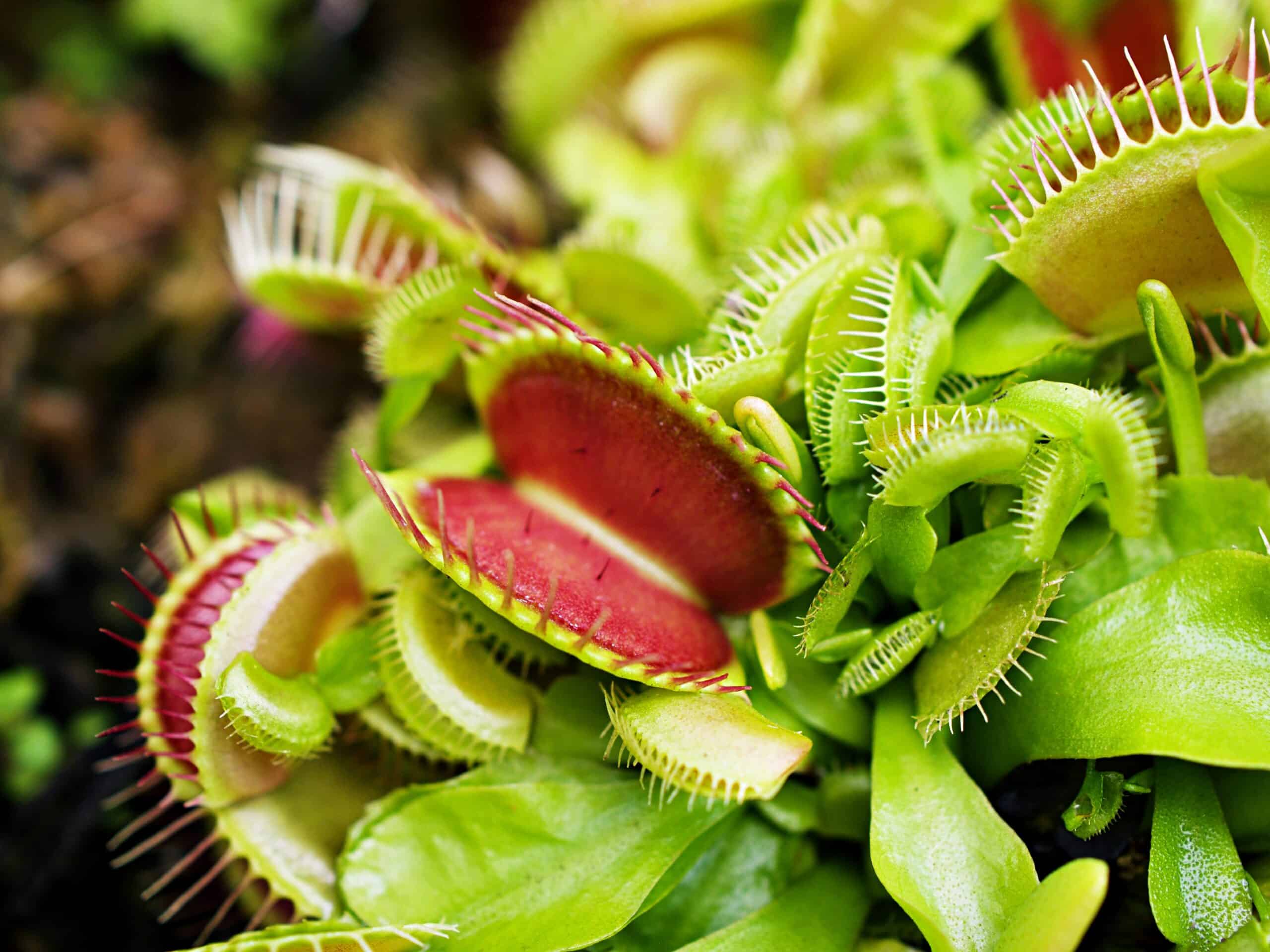
The Venus Flytrap is one of the most well-known carnivorous plants. Native to subtropical wetlands in the United States, particularly North and South Carolina. Its hinged leaves snap shut when triggered by unsuspecting prey. What sets the Venus Flytrap apart is its rapid response mechanism. The leaves close within milliseconds, trapping insects inside. Digestive enzymes then break down the prey, allowing the plant to absorb essential nutrients.
Pitcher Plant (Nepenthes)
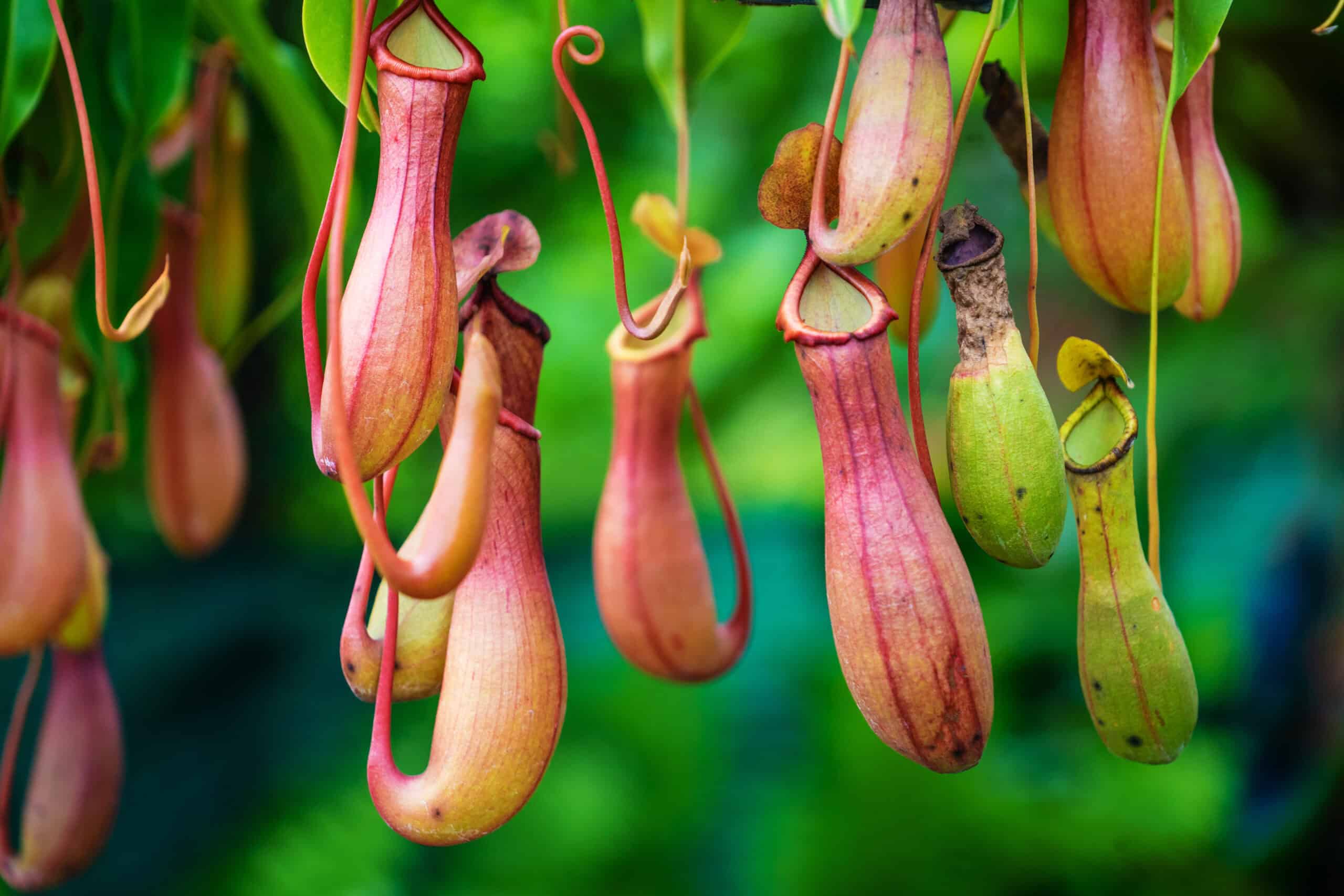
Pitcher Plants are remarkable for their deep, fluid-filled pitchers. They are predominantly found in tropical regions of Southeast Asia. These pitchers attract and drown insects, which are then digested. One unique feature is the slippery rim, making it hard for prey to escape. The fluid inside contains digestive enzymes that break down the prey, providing nutrients to the plant. This adaptation allows them to thrive in nutrient-poor soils.
Sundew (Drosera)
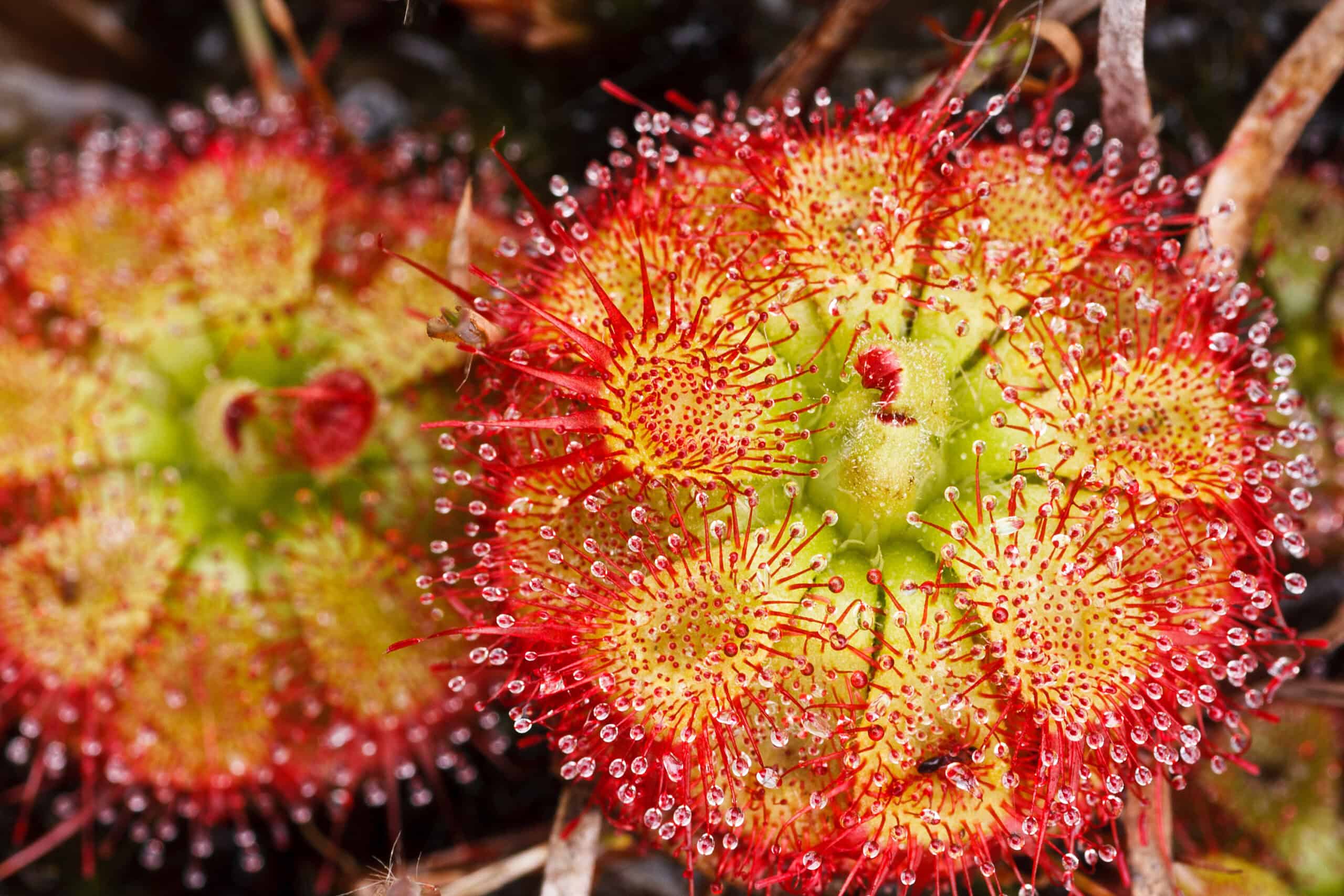
Sundews are small but captivating carnivorous plants. They are distributed widely across every continent except Antarctica. Their leaves are covered in sticky tentacles that trap insects. The tentacles secrete a glistening, sticky substance that lures and ensnares prey. Once an insect is caught, the tentacles curl around it, and digestive enzymes break it down. This process provides the plant with essential nutrients.
Butterwort (Pinguicula)
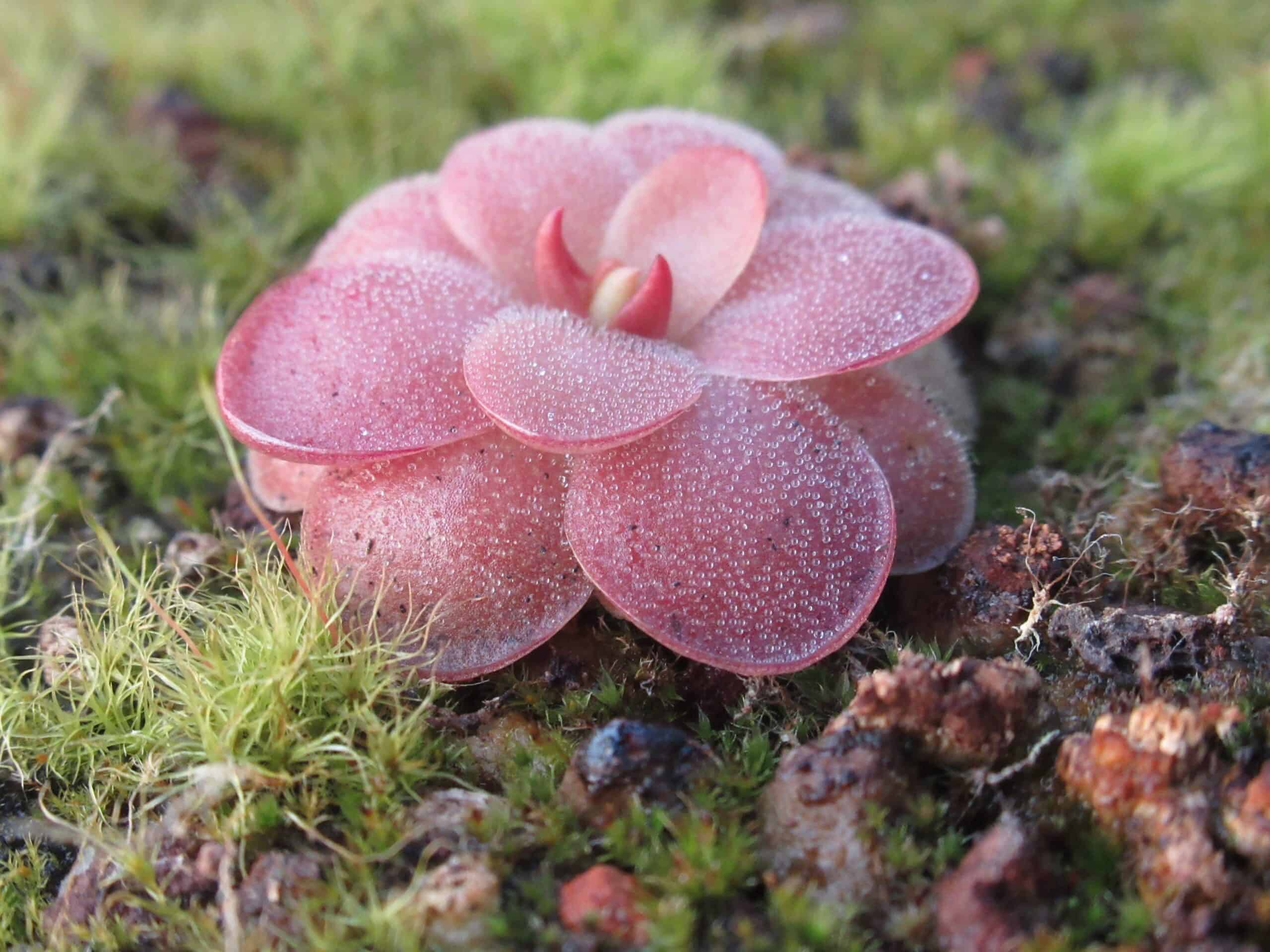
Butterworts are fascinating for their sticky, glandular leaves. These plants are found in various regions, including Europe and North America. Their leaves excrete a sticky substance that traps insects. Once trapped, the leaves secrete digestive enzymes to break down the prey. Butterworts also have the ability to absorb nutrients through their leaves. This adaptation allows them to thrive in nutrient-poor environments.
Bladderwort (Utricularia)
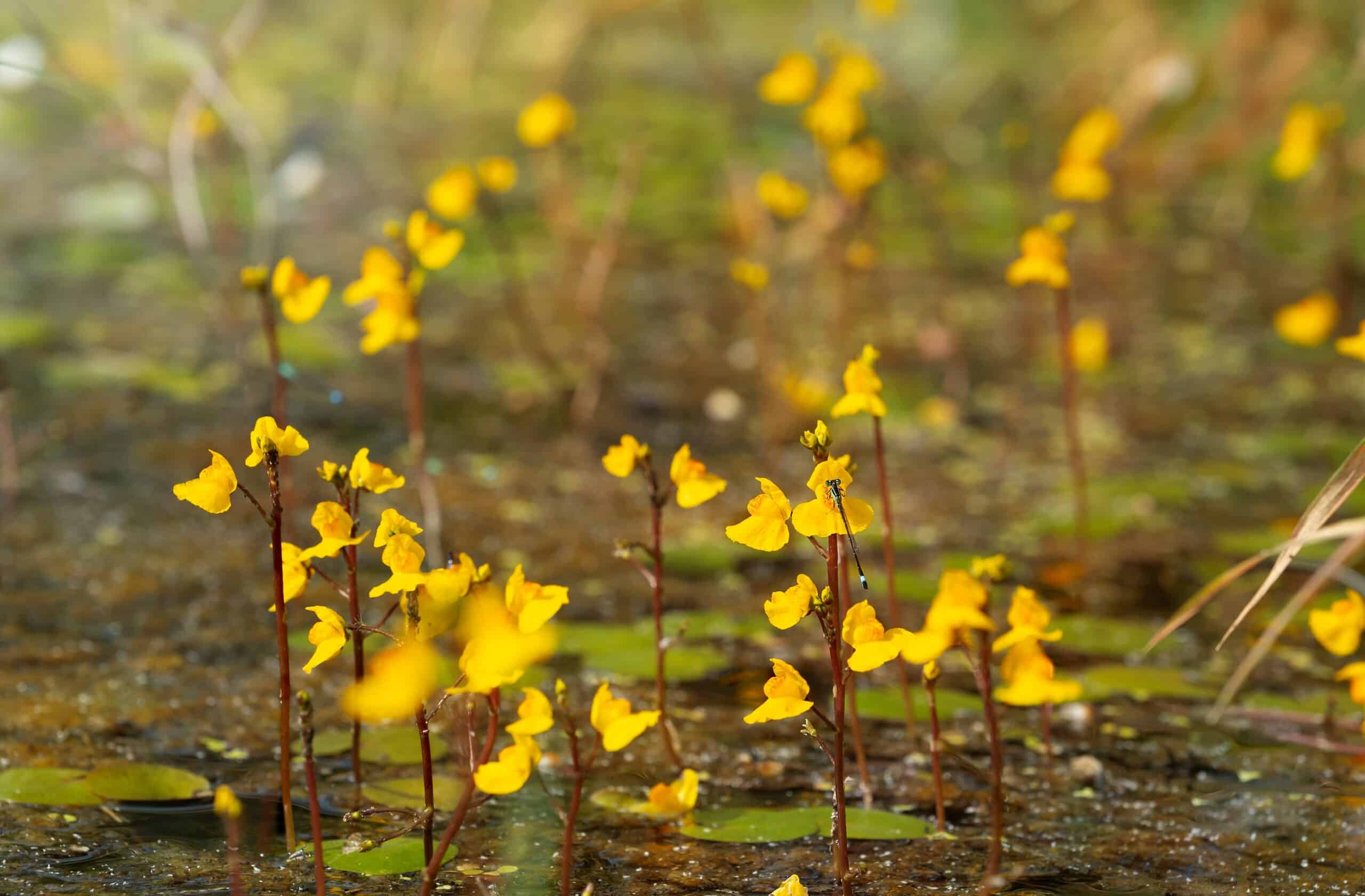
Bladderworts are unique among carnivorous plants for their underwater traps. These plants are found in aquatic and wetland habitats worldwide. They use tiny bladder-like traps to capture small aquatic organisms. The traps operate with a vacuum mechanism, sucking in prey when triggered. Bladderworts are highly efficient, capturing and digesting prey quickly. This adaptation helps them survive in nutrient-poor water environments.
Cobra Lily (Darlingtonia californica)
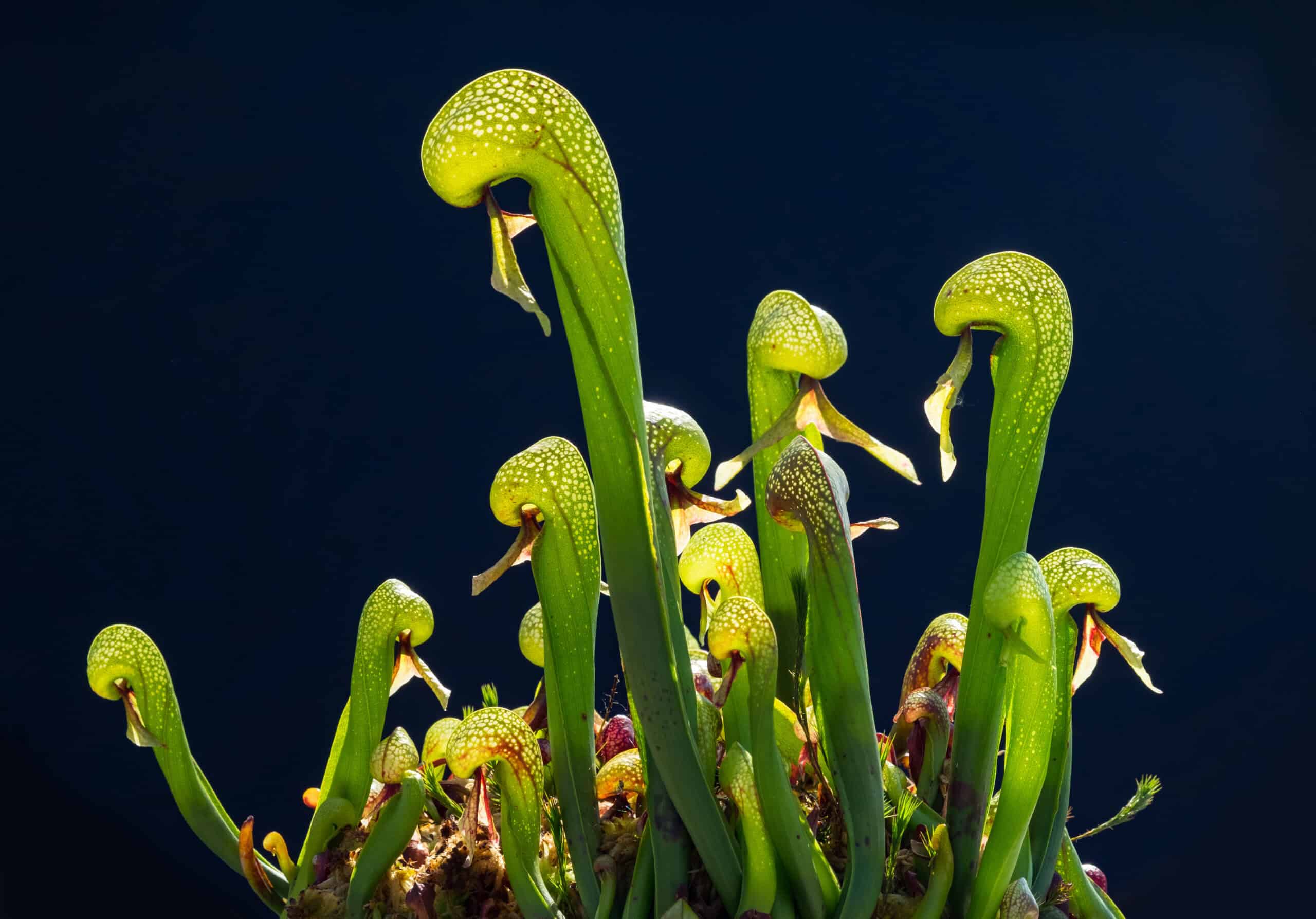
Cobra Lilies are striking with their hooded, cobra-like appearance. They are native to the boggy regions of Northern California and Oregon. Their leaves form a tubular structure that traps insects. What makes Cobra Lilies unique is their false exit, which confuses trapped insects. The plant uses downward-pointing hairs to guide prey into digestive chambers. This adaptation ensures efficient nutrient absorption.
Australian Pitcher Plant (Cephalotus follicularis)
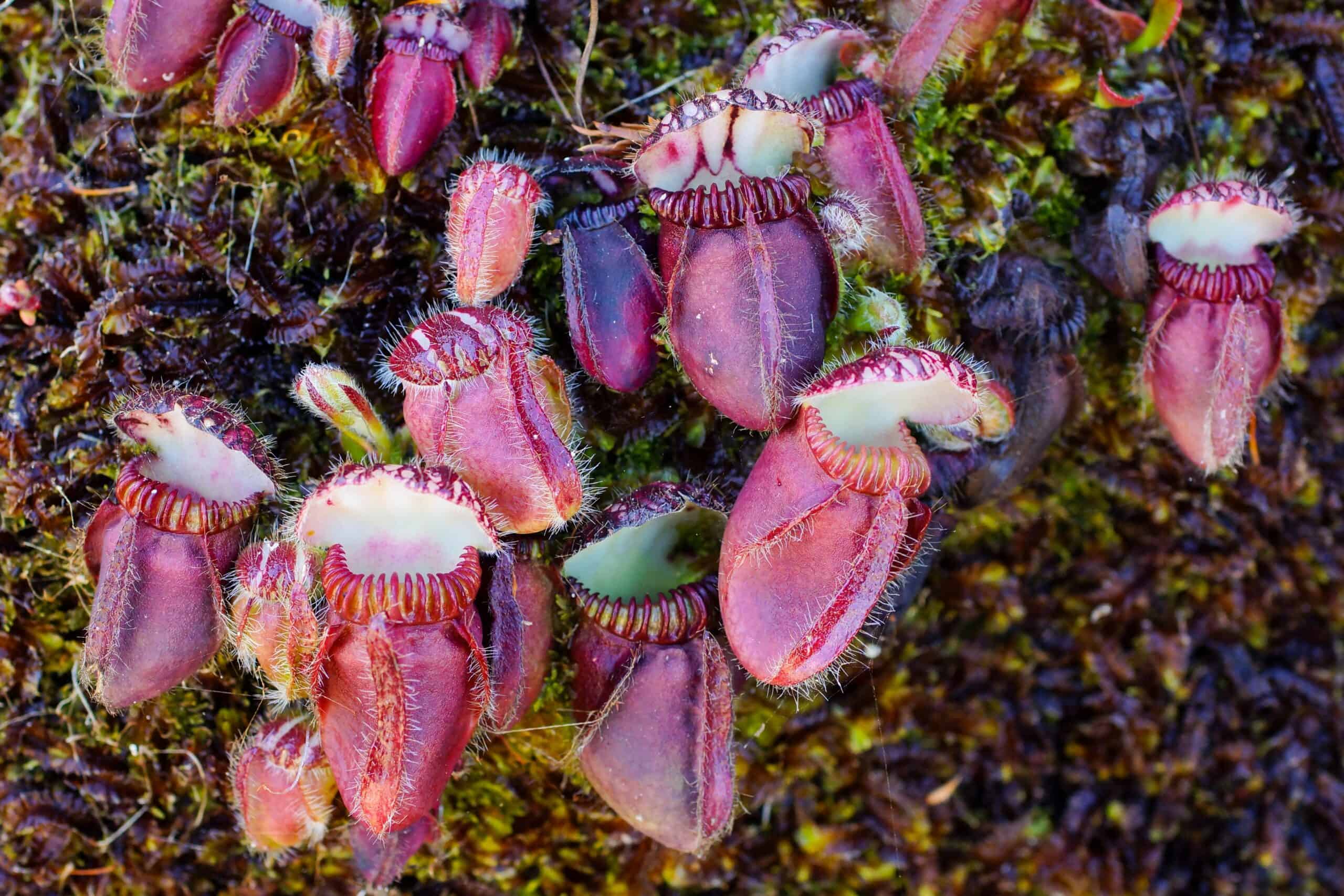
The Australian Pitcher Plant is a rare and distinctive species. It is endemic to southwestern Australia, thriving in sandy, nutrient-poor soils. Its small, green pitchers are highly effective at trapping insects. The pitchers contain a slippery inner surface that prevents prey from escaping. Digestive fluids break down the trapped insects, providing essential nutrients. This adaptation helps the plant survive in harsh conditions.
Tropical Pitcher Plant (Nepenthes rajah)
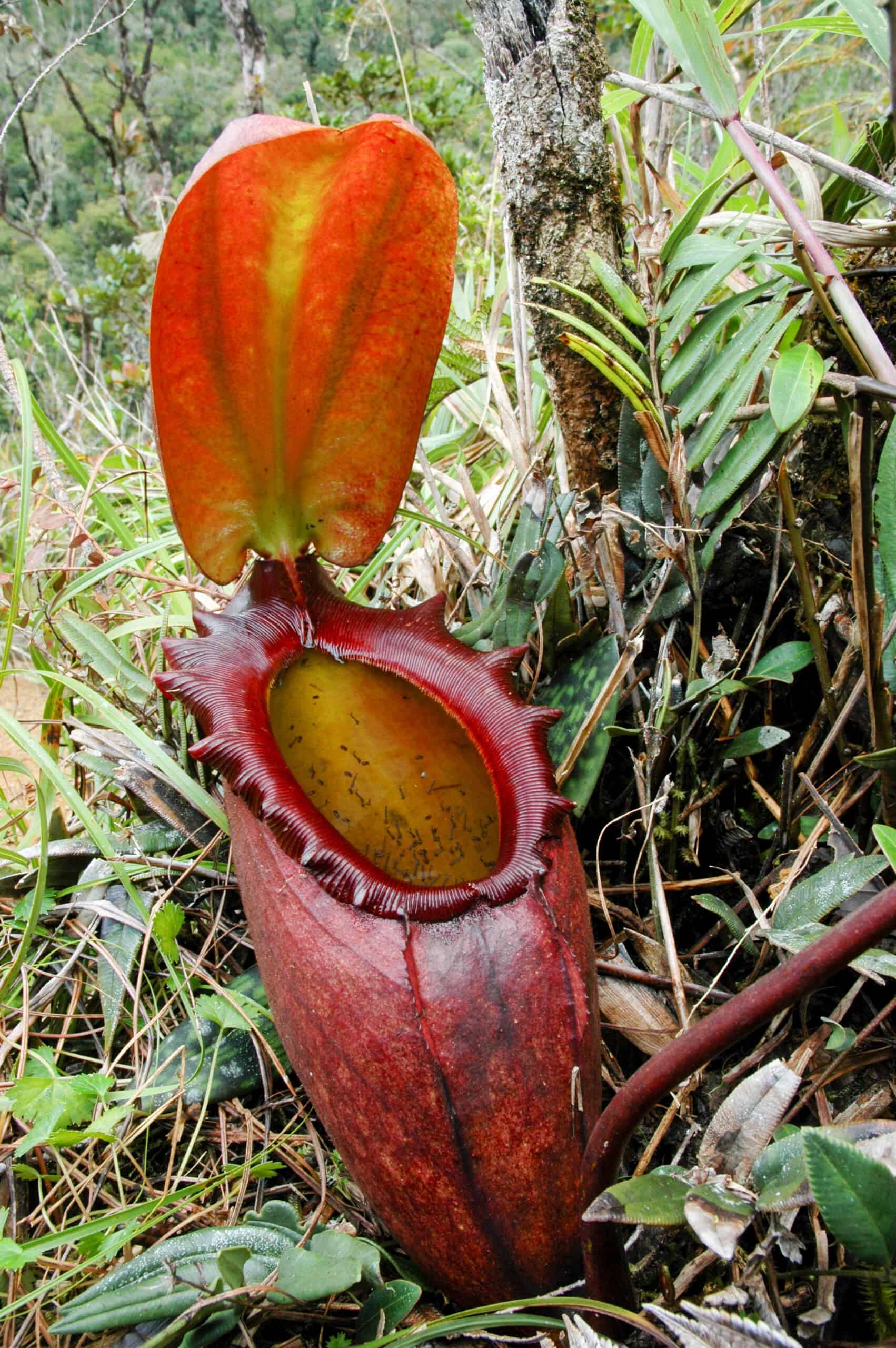
Nepenthes rajah is renowned for its large, impressive pitchers. This plant is native to Borneo’s highland regions. Its pitchers are capable of trapping larger prey, including small vertebrates. One unique feature is its mutualistic relationship with certain species of ants. The ants help keep the pitchers clean by feeding on trapped insects. This symbiotic relationship benefits both the plant and the ants.
Waterwheel Plant (Aldrovanda vesiculosa)
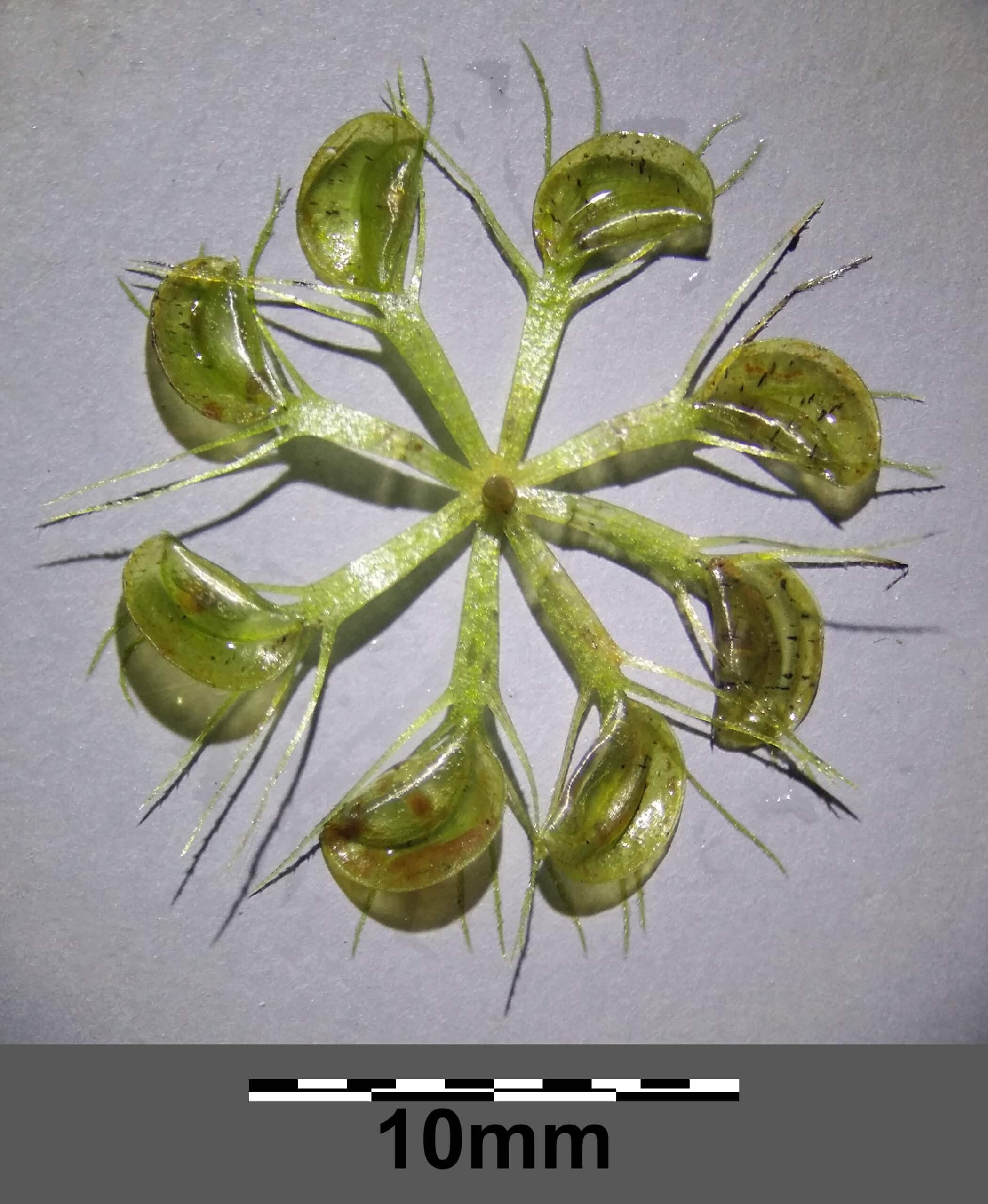
The Waterwheel Plant is a fascinating aquatic carnivorous plant. It is native to Europe, Asia, Africa, and Australia. This plant floats freely in water and uses trap-like leaves to capture prey. Its traps work similarly to those of the Venus Flytrap. When tiny aquatic insects trigger the sensitive hairs, the trap snaps shut. This rapid movement helps the plant capture prey efficiently, providing essential nutrients.
Portuguese Sundew (Drosophyllum lusitanicum)
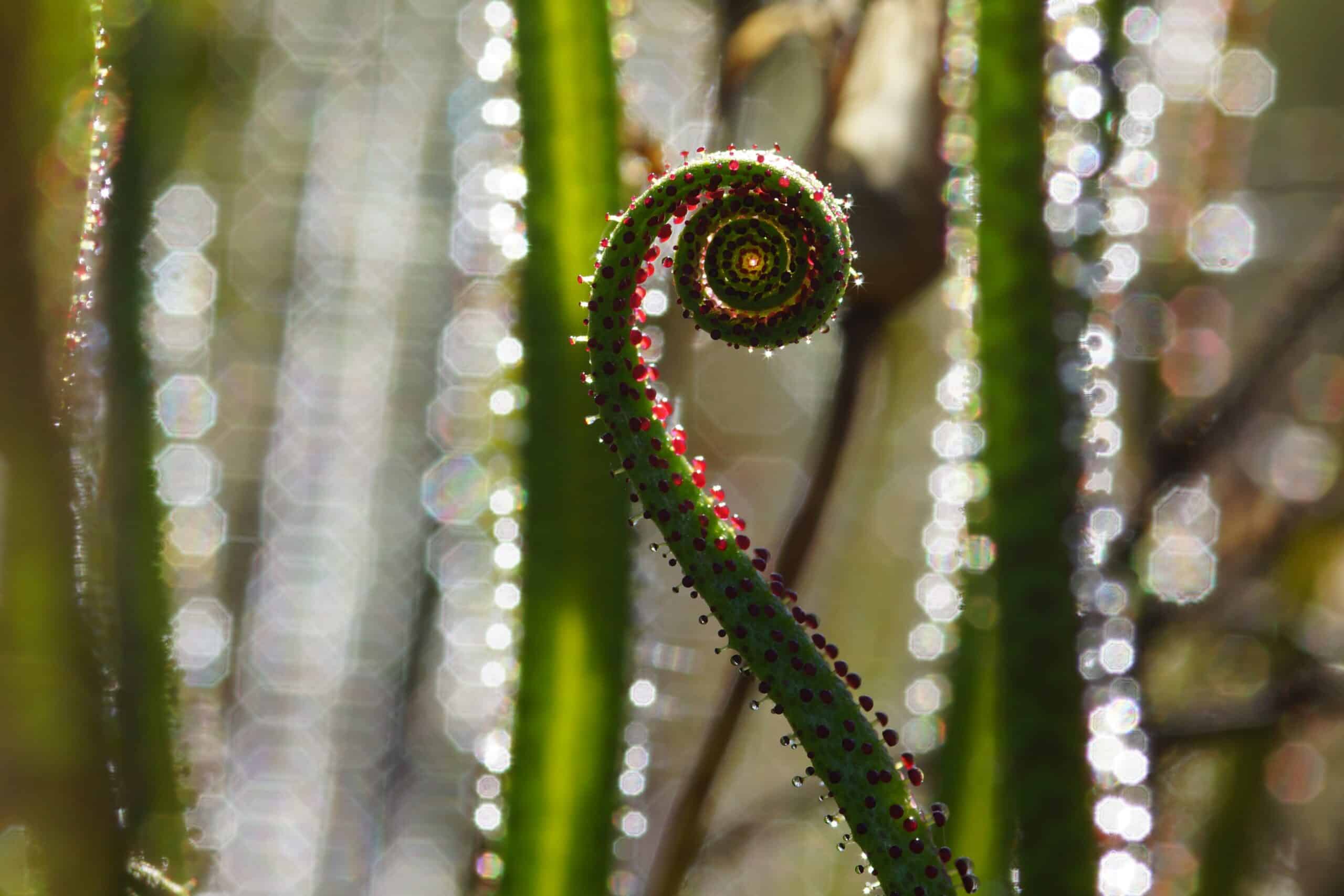
The Portuguese Sundew is a unique carnivorous plant found in Portugal and Morocco. Unlike other sundews, it thrives in dry, sandy soils. Its long, slender leaves are covered in sticky, glandular hairs that trap insects. The plant’s sticky secretion attracts and ensnares prey. Digestive enzymes then break down the trapped insects, providing nutrients. This adaptation allows the Portuguese Sundew to thrive in harsh, arid environments.
Parrot Pitcher Plant (Sarracenia psittacina)

The Parrot Pitcher Plant is native to the southeastern United States. It has distinctive, parrot-beak-shaped pitchers that trap insects. These pitchers lie close to the ground, making it easier to capture crawling insects. One unique feature is its false exit, which confuses trapped prey. Insects enter the pitcher and find themselves trapped by downward-pointing hairs. This ensures they cannot escape, allowing the plant to digest them efficiently.
White-Top Pitcher Plant (Sarracenia leucophylla)
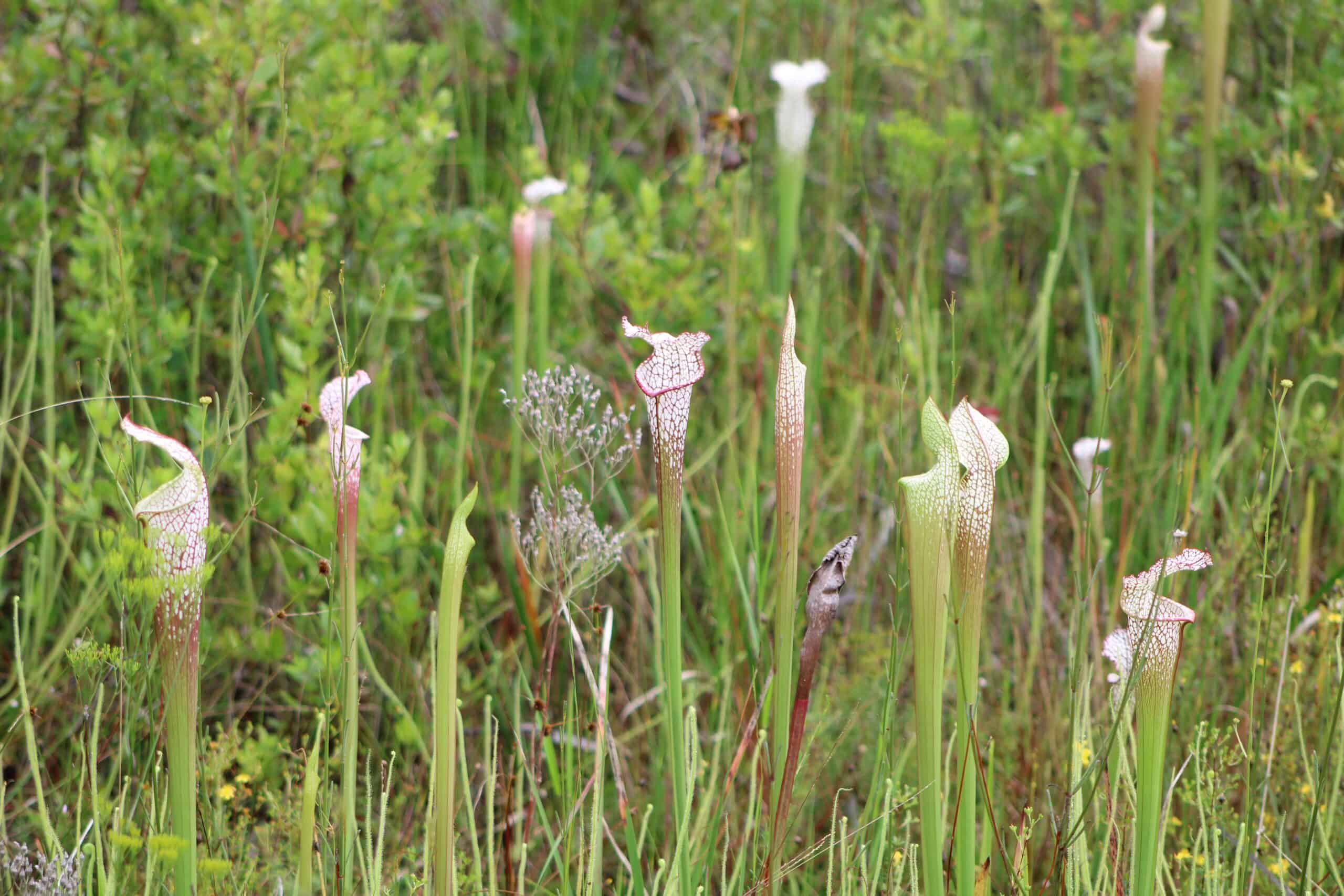
The White-Top Pitcher Plant is a striking carnivorous plant native to the southeastern United States. Its tall, white-topped pitchers attract insects with their vibrant colors and sweet nectar. These pitchers can grow up to three feet tall. The plant uses downward-pointing hairs to trap insects inside the pitcher. Once trapped, insects are digested by the plant’s enzymes. This process provides essential nutrients, helping the plant thrive in nutrient-poor soils.
Cape Sundew (Drosera capensis)
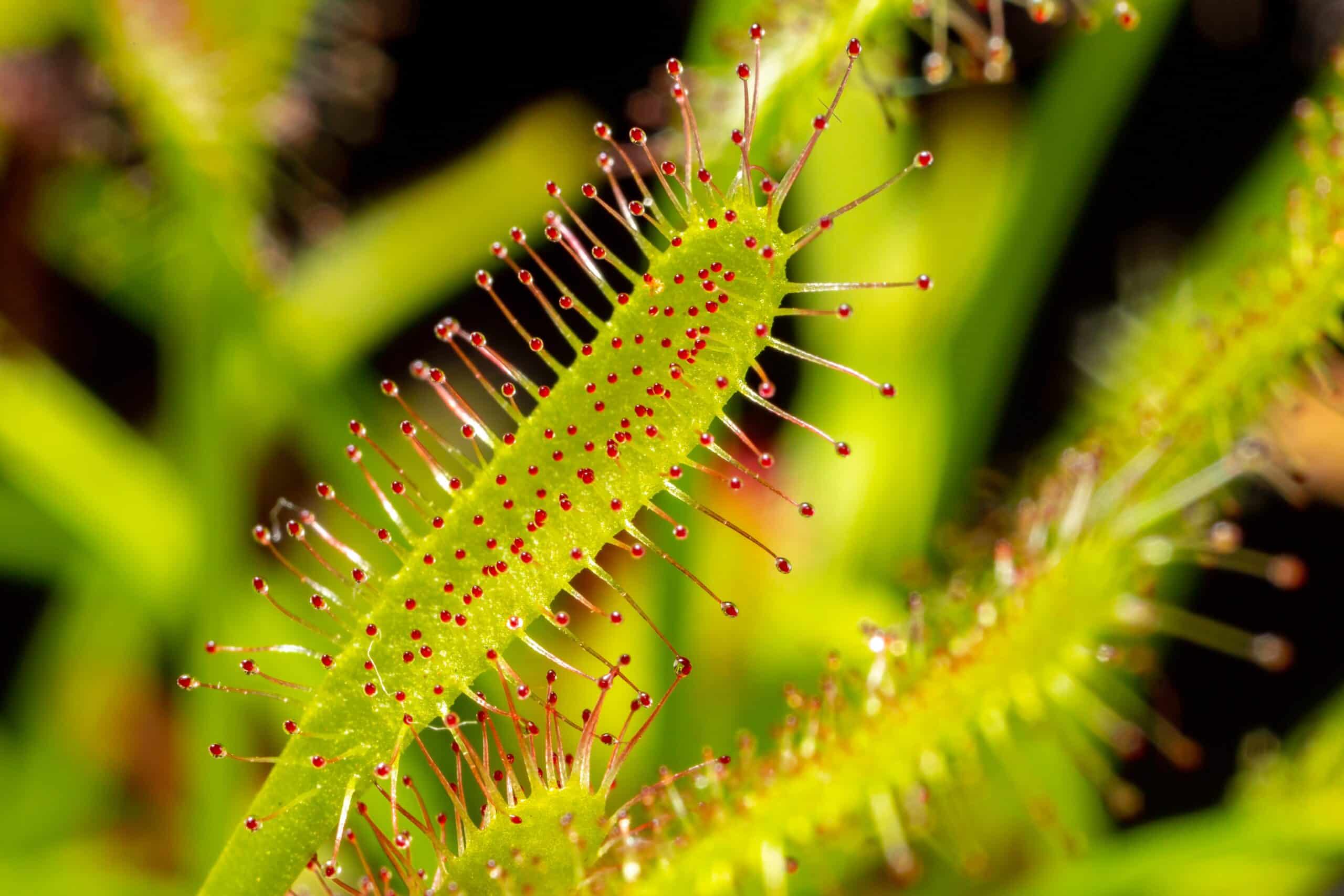
The Cape Sundew is a captivating carnivorous plant native to South Africa. It has long, slender leaves covered in sticky tentacles. These tentacles secrete a glistening substance that traps insects. When an insect gets caught, the tentacles slowly curl around it. Digestive enzymes then break down the prey, providing nutrients to the plant. This adaptation allows the Cape Sundew to thrive in nutrient-poor environments.
Yellow Pitcher Plant (Sarracenia flava)
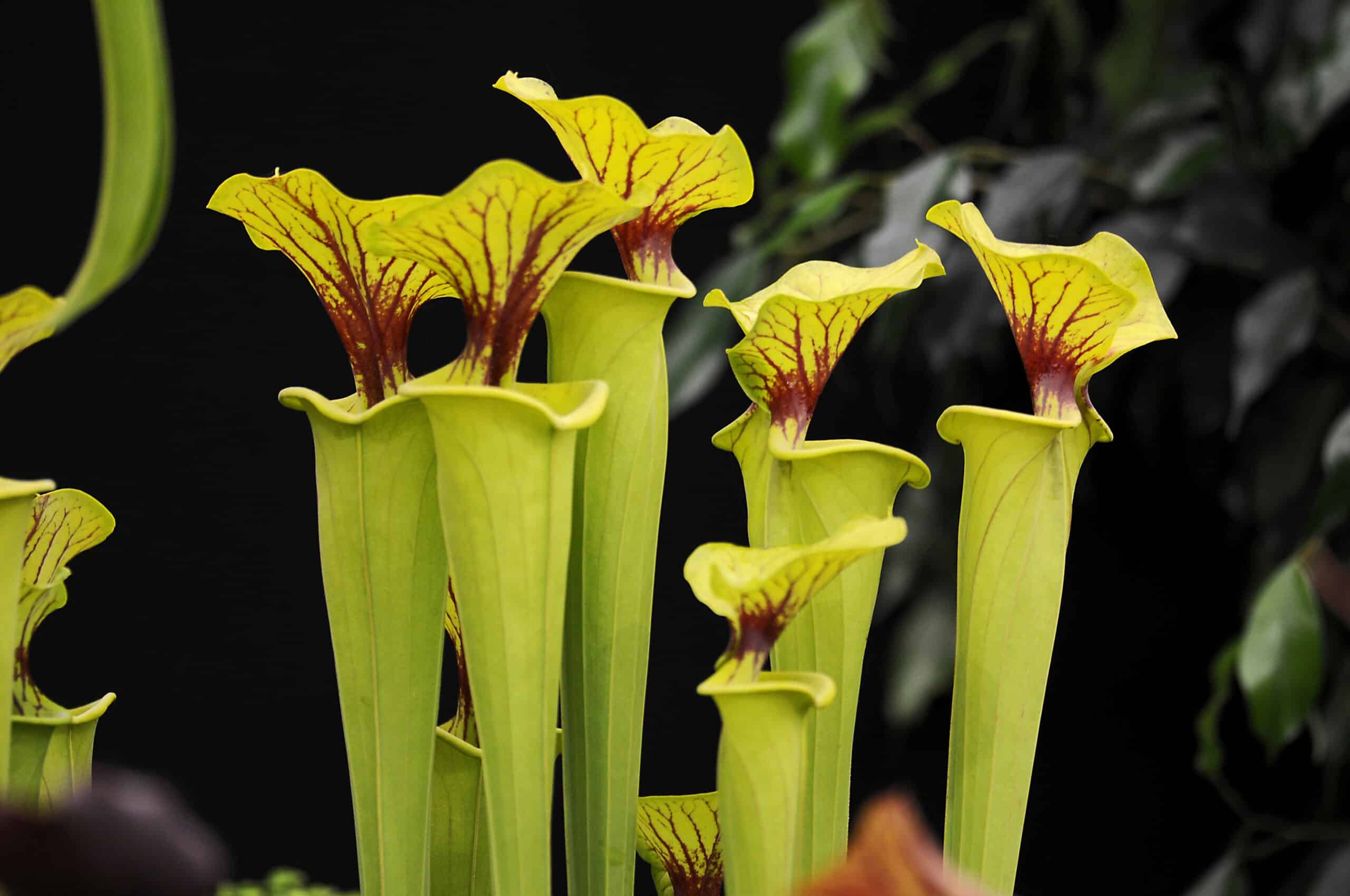
The Yellow Pitcher Plant is a tall, striking carnivorous plant native to the southeastern United States. Its bright yellow pitchers attract insects with their vibrant color and sweet nectar. These pitchers can grow up to three feet tall. The plant’s pitchers have a slippery inner surface that makes it difficult for insects to escape. Once trapped, insects are digested by the plant’s enzymes. This process provides essential nutrients, allowing the plant to thrive in nutrient-poor soils.
Forked Sundew (Drosera binata)
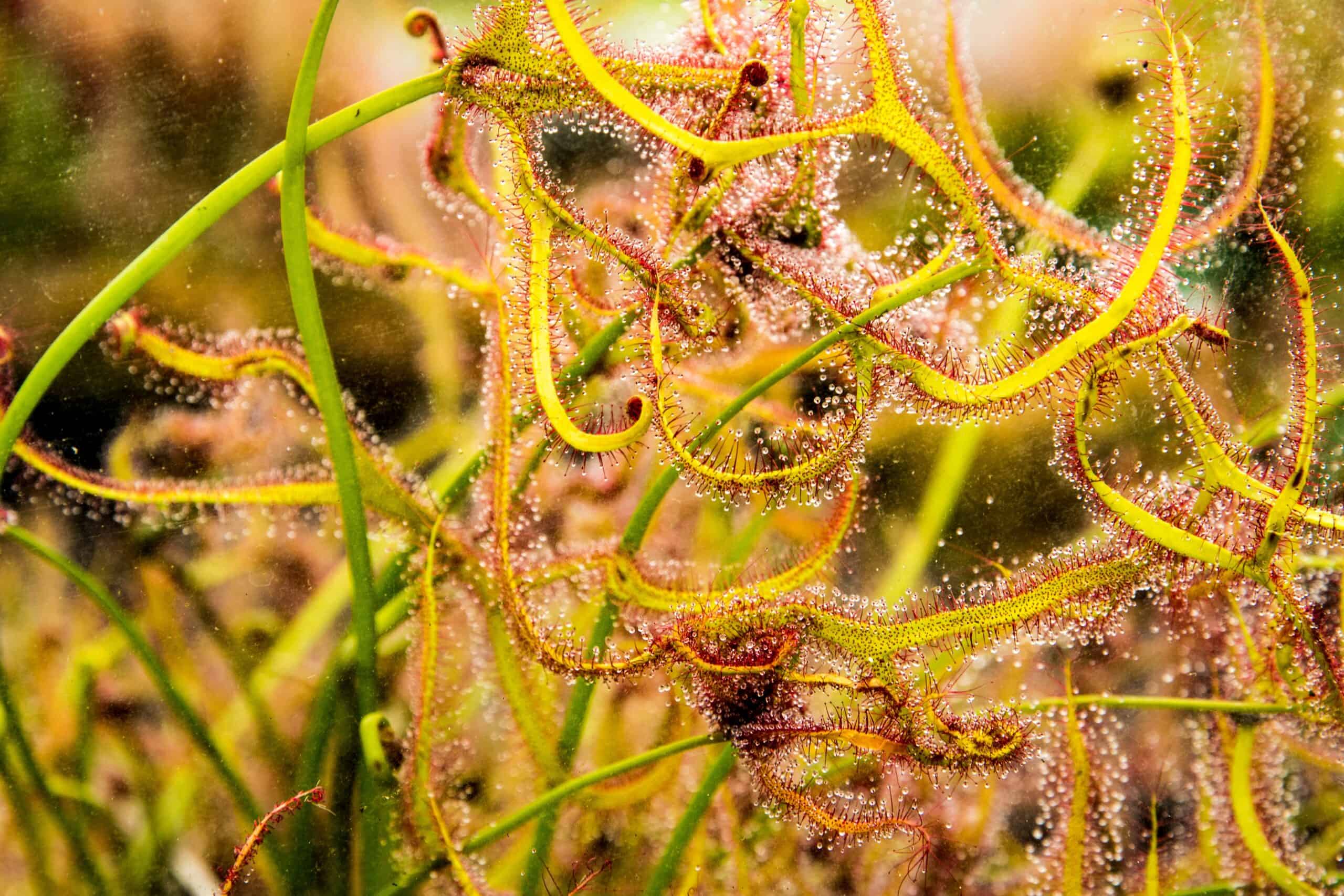
The Forked Sundew is a unique carnivorous plant native to Australia and New Zealand. It has forked, V-shaped leaves covered in sticky tentacles. These tentacles secrete a substance that traps and digests insects. The plant’s leaves can capture multiple insects at once. Digestive enzymes break down the trapped prey, providing essential nutrients. This adaptation allows the Forked Sundew to thrive in nutrient-poor soils.
This article originally appeared on Rarest.org.
More from Rarest.org
1967 Roosevelt Dime Value Guide
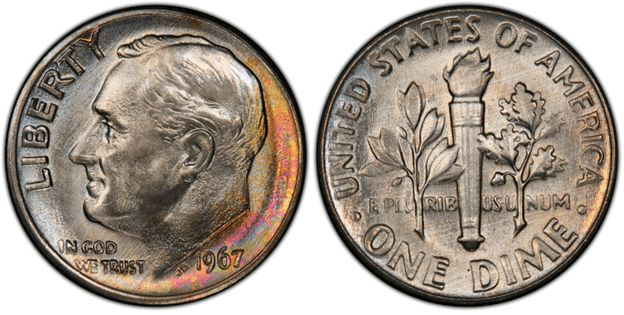
The Roosevelt Dime, which has been in circulation since 1946, commemorates President Franklin D. Roosevelt’s support for the March of Dimes and his efforts to eradicate polio. Read More.
1968 Jefferson Nickel Value Guide

Comprised of 75% Copper, 25% Nickel the Jefferson Nickel was produced from 1938-2003. On October 3, 1938, the US mints produced the first Jefferson coins. Read More.
1969 Kennedy Half Dollar Value Guide

The Kennedy half dollar, a fifty-cent coin that was first issued by the United States Mint in 1964, is still manufactured today. Read More.
